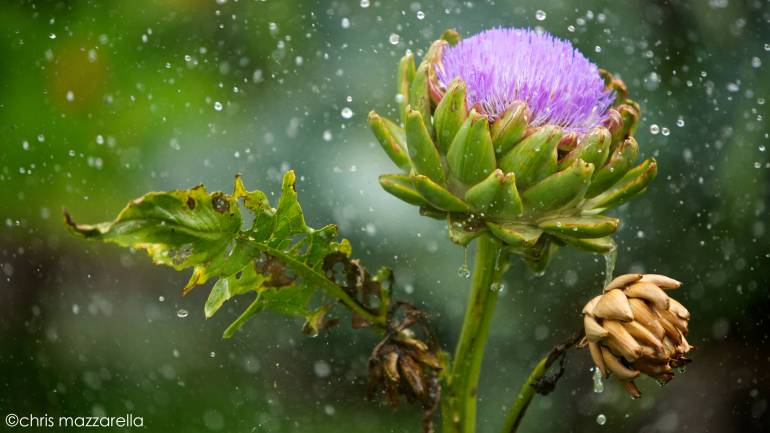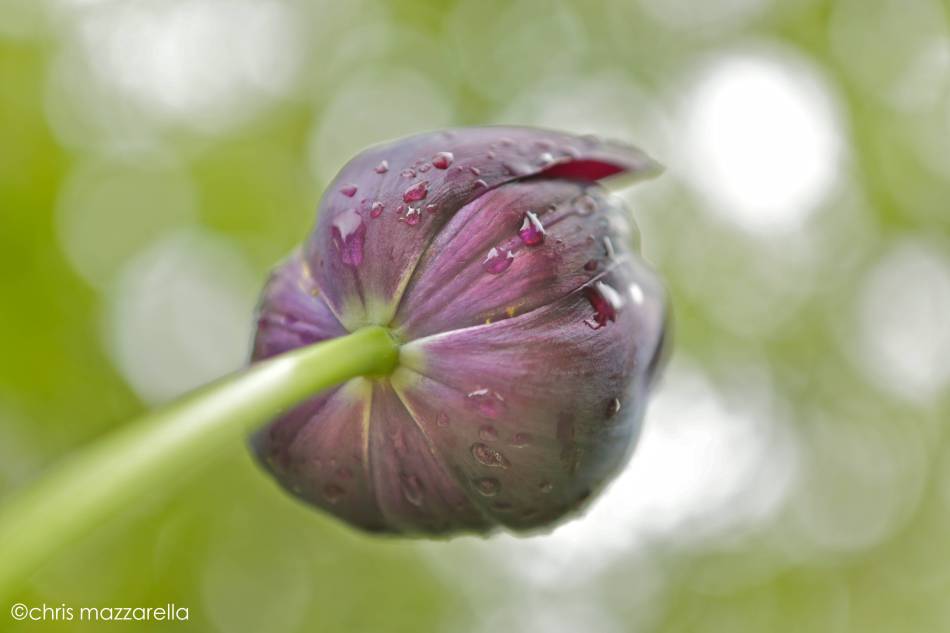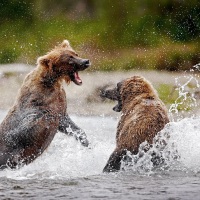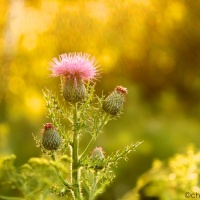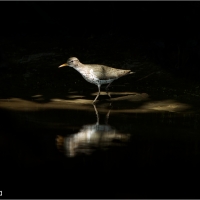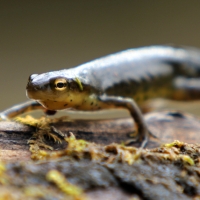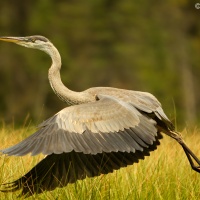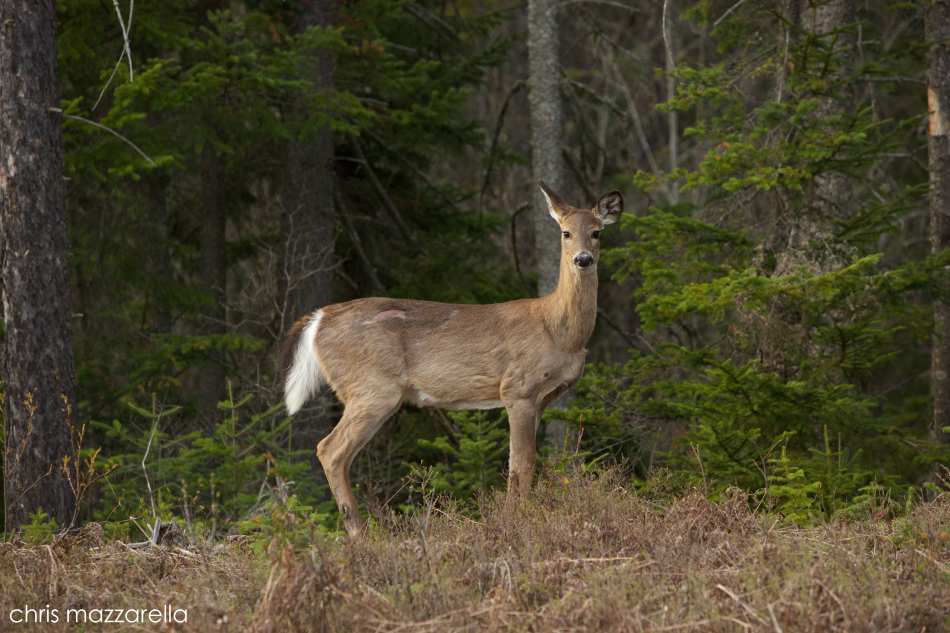 I finally got up to the North Country for a few days for some Spring fishing and sightseeing. Spring is off to a late start north of the 45th parallel, where the wildlife is emerging from a rough winter. The leaves were just beginning to bud, and snow still dotted the forest. The two and a half hour drive felt like a two week journey back in time. It was still beautiful despite the absence of green foliage, and the fish were biting too. I spent most of my time casting lines into the Connecticut, but did manage to snap a few shots of some mangy winter survivors. Click on an image for a closer look.
I finally got up to the North Country for a few days for some Spring fishing and sightseeing. Spring is off to a late start north of the 45th parallel, where the wildlife is emerging from a rough winter. The leaves were just beginning to bud, and snow still dotted the forest. The two and a half hour drive felt like a two week journey back in time. It was still beautiful despite the absence of green foliage, and the fish were biting too. I spent most of my time casting lines into the Connecticut, but did manage to snap a few shots of some mangy winter survivors. Click on an image for a closer look.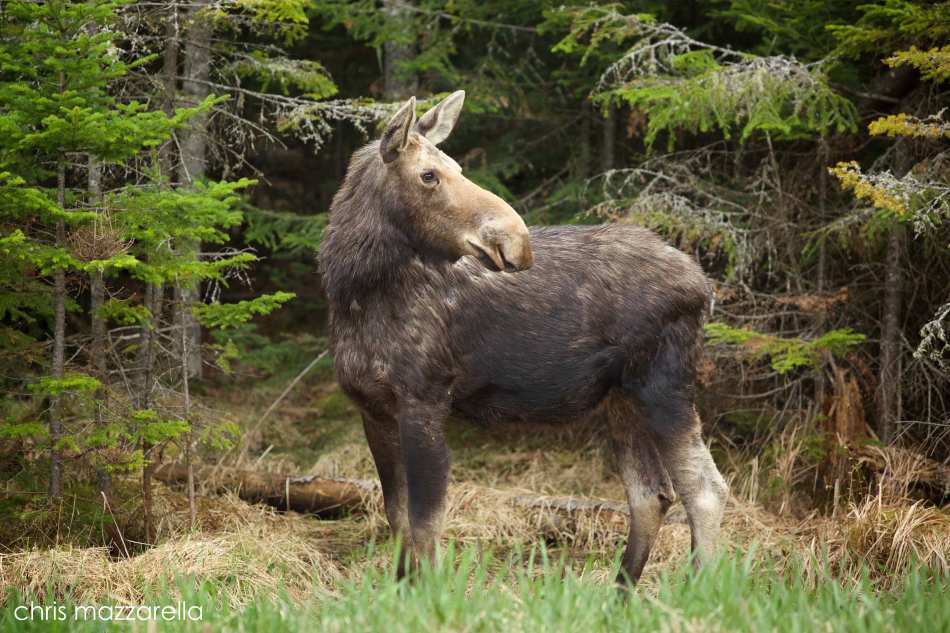

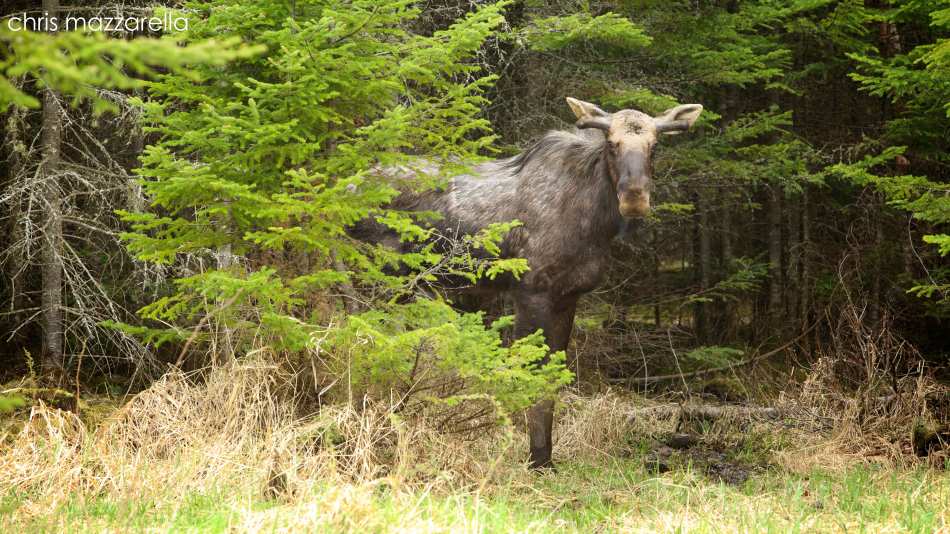
Latest
Mangy May
Zooming in on Spring
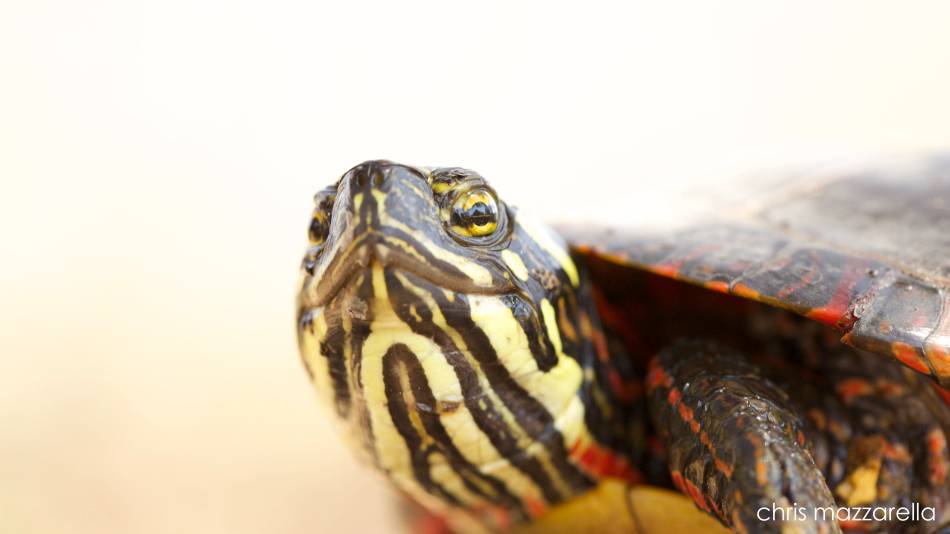 The local peepers, croakers, and grackles are ringing the Upper Valley’s Springtime alarm clock, alerting me that its time to boot up the third season of Forest Forward. I haven’t had a chance to dig too deep into the forest this Spring so I thought I’d start things off with a sampling of backyard close-ups. Click on an image to zoom in even closer.
The local peepers, croakers, and grackles are ringing the Upper Valley’s Springtime alarm clock, alerting me that its time to boot up the third season of Forest Forward. I haven’t had a chance to dig too deep into the forest this Spring so I thought I’d start things off with a sampling of backyard close-ups. Click on an image to zoom in even closer.
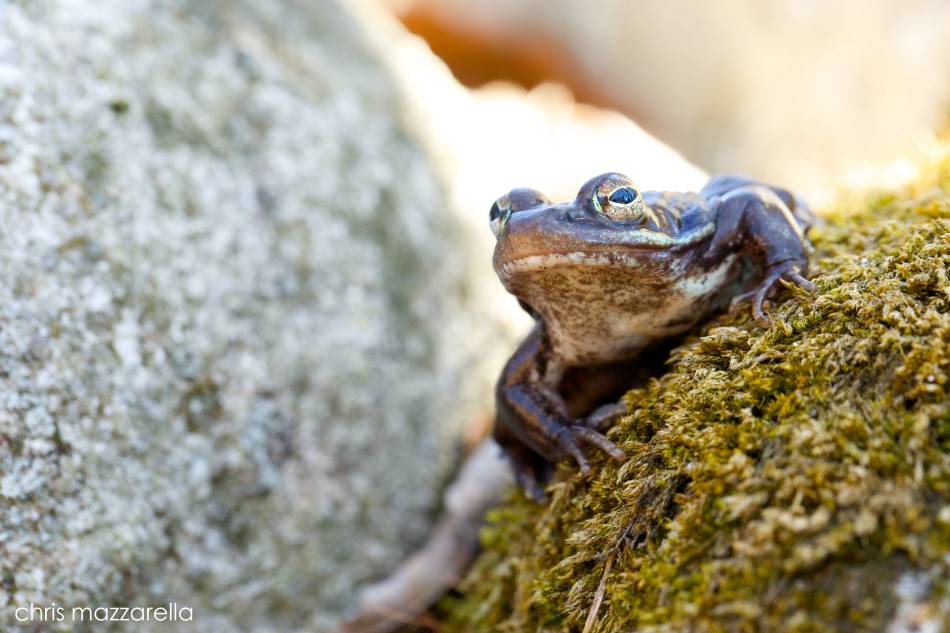
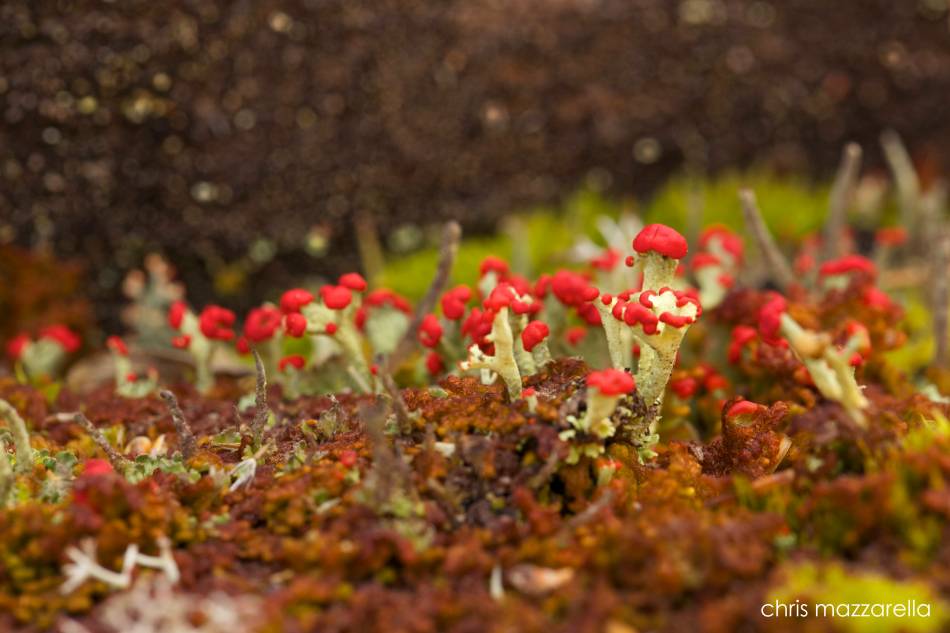
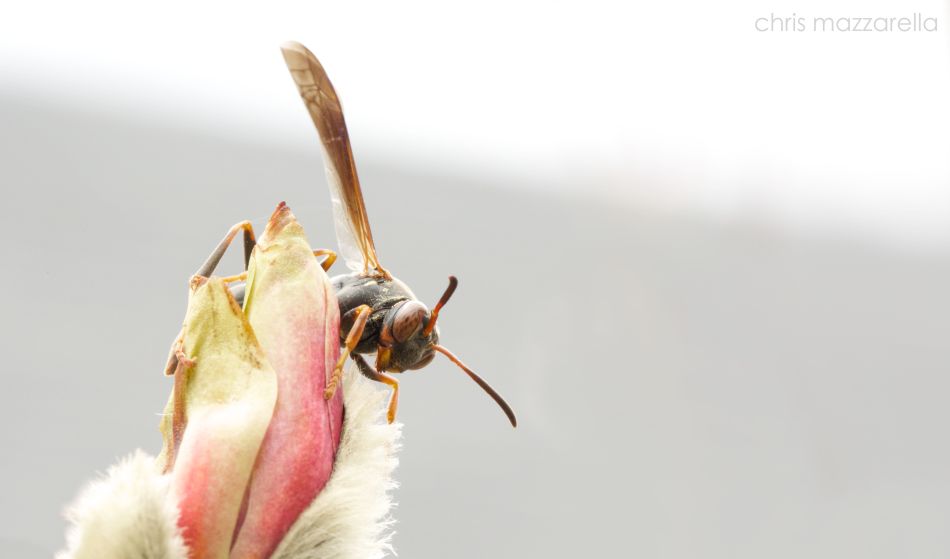
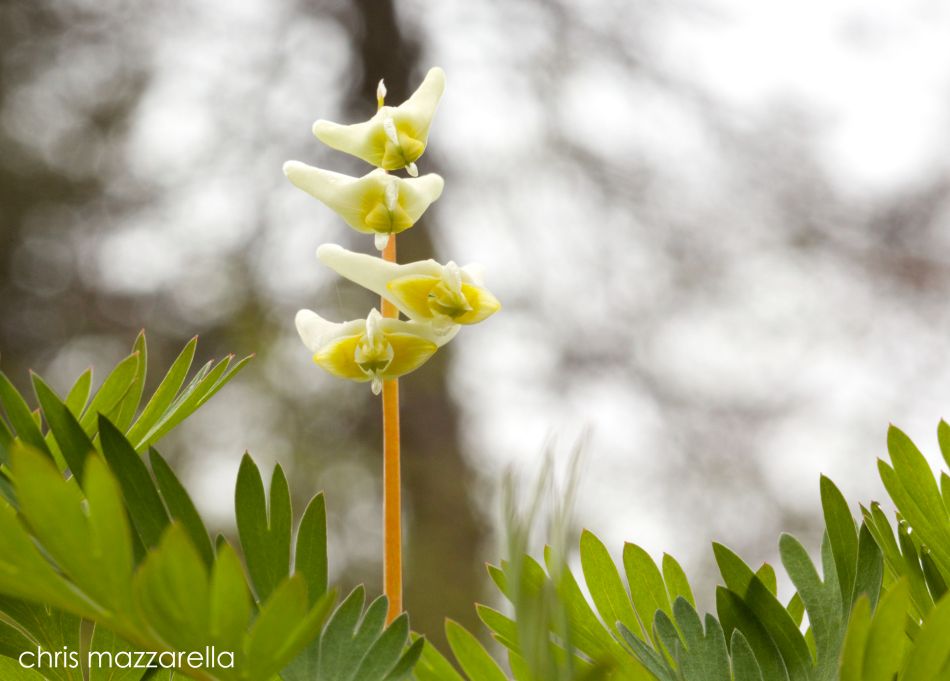
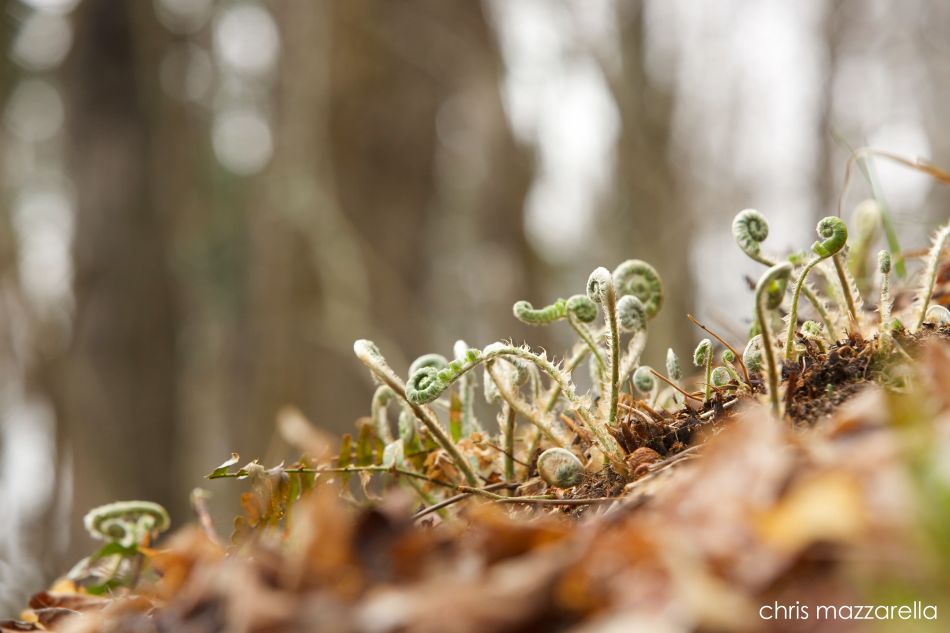
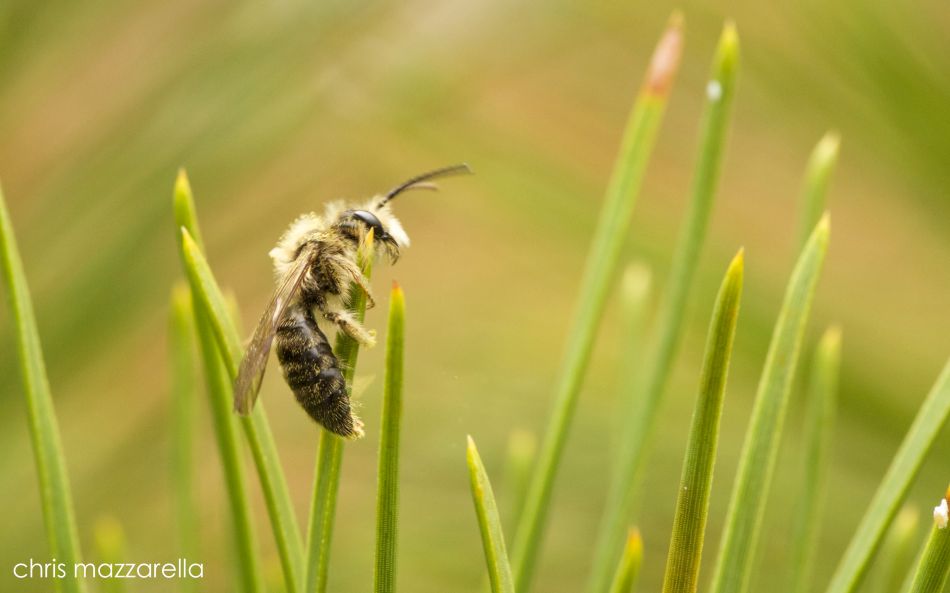
Looking forward to sharing whatever shows up in the woods this year. Thanks for joining me!
In Sickness and in Health
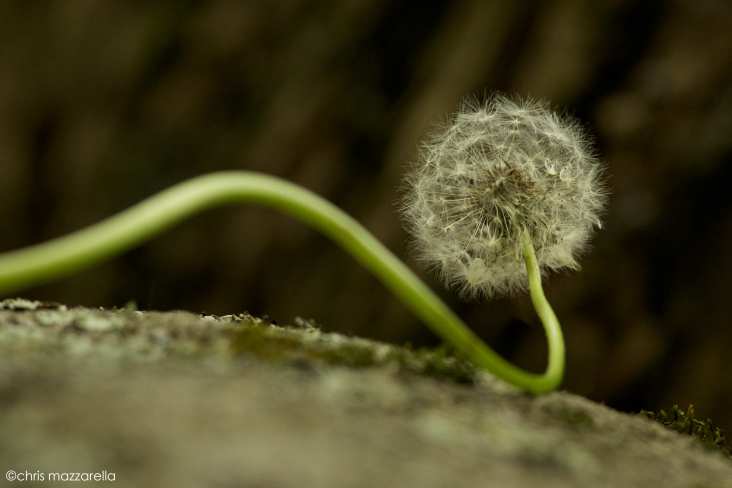 I often push the limits of acceptable shooting conditions in this blog to demonstrate the versatile nature of photography as both a fun pastime and a window to the woods. For me these are the primary functions of this beloved activity, so I don’t wait around for the “stars to align” before venturing out for a shoot. Outdoor photographers are often lumped into the categories of “farmers” and “hunters”. The farmers tout their careful planning and precision in cultivating the epic cover shot, while the hunters are portrayed as aimless trigger-happy tourists wandering around with their camera’s in burst mode. I contend that exploration is an essential part of the creative process and I’d proudly don the badge of “hunter” in reference to my photographic modus operandi. While “hunting” isn’t the best way to furnish your portfolio, it’s a necessary part of the process of uncovering original compositions. Shooting through the sub-prime also sharpens your skills, preparing you for that trophy-shot when optimum conditions arise. Sure, there must be a breaking point to this no-holds-barred photographic pursuit. Well, last weekend’s onslaught of obstacles had me ready to finally throw in the towel….but I’m sure glad I didn’t.
I often push the limits of acceptable shooting conditions in this blog to demonstrate the versatile nature of photography as both a fun pastime and a window to the woods. For me these are the primary functions of this beloved activity, so I don’t wait around for the “stars to align” before venturing out for a shoot. Outdoor photographers are often lumped into the categories of “farmers” and “hunters”. The farmers tout their careful planning and precision in cultivating the epic cover shot, while the hunters are portrayed as aimless trigger-happy tourists wandering around with their camera’s in burst mode. I contend that exploration is an essential part of the creative process and I’d proudly don the badge of “hunter” in reference to my photographic modus operandi. While “hunting” isn’t the best way to furnish your portfolio, it’s a necessary part of the process of uncovering original compositions. Shooting through the sub-prime also sharpens your skills, preparing you for that trophy-shot when optimum conditions arise. Sure, there must be a breaking point to this no-holds-barred photographic pursuit. Well, last weekend’s onslaught of obstacles had me ready to finally throw in the towel….but I’m sure glad I didn’t.
With the remnants of a tropical storm approaching, a backlog of work to complete, and a missed Fed-ex lens delivery, I had plenty of excuses to cancel last weeks four-day photography outing. The forecast was colored with unsavory descriptors including “soggy”, “raw”, and “unseasonably cold”. Let’s just say the beaver ponds weren’t exactly calling my name. Just when I was ready to scrap the whole trip my trusty Fed-ex driver spotted my truck in the yard on his way back home. The after hours drop-off was much appreciated, and a 300mm telephoto lens was now waiting to be unpacked and taken for a test drive. With renewed enthusiasm, I loaded up the kayak and headed north.
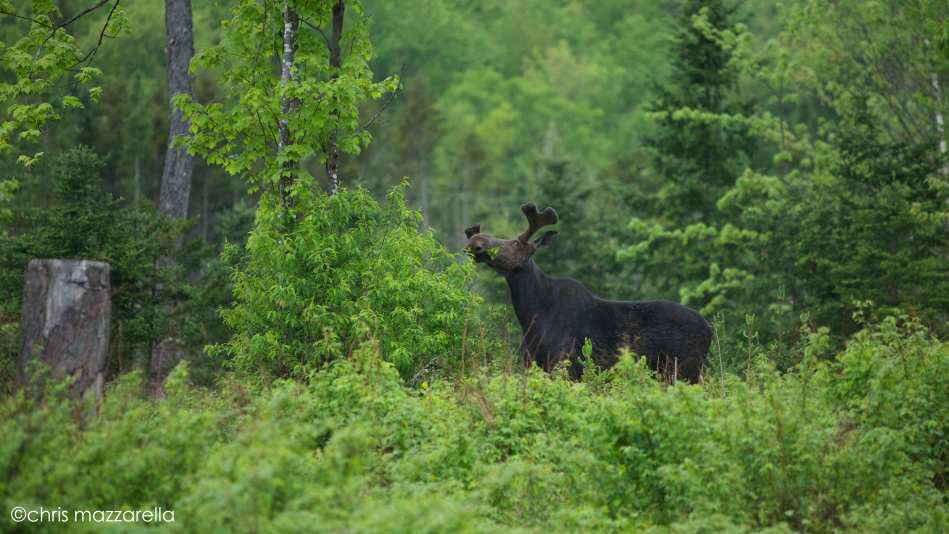 The sun was setting as I passed the 45th parallel, and I had just enough time to scout out an old clear-cut for moose before completely running out of daylight. Just as soon as I hopped out of the truck I spotted a nice looking bull browsing on saplings about fifty yards through the clearing. He detected me right away, but showed little interest and continued his eating routine in the light rain. I enjoyed the view from a distance snapping shots with the 300mm f4 telephoto. The lens had nice reach for handheld glass, but the low-light conditions left much to be desired cranking out shots at 4000 ISO to get an acceptable exposure. With all of my attention on the browsing bull, I completely overlooked his companion who was slowly approaching me from the opposite direction. It was a yearling bull who appeared to be joining dad for dinner while reminding me to pay attention to my surroundings. I said goodnight, and headed back to the truck.
The sun was setting as I passed the 45th parallel, and I had just enough time to scout out an old clear-cut for moose before completely running out of daylight. Just as soon as I hopped out of the truck I spotted a nice looking bull browsing on saplings about fifty yards through the clearing. He detected me right away, but showed little interest and continued his eating routine in the light rain. I enjoyed the view from a distance snapping shots with the 300mm f4 telephoto. The lens had nice reach for handheld glass, but the low-light conditions left much to be desired cranking out shots at 4000 ISO to get an acceptable exposure. With all of my attention on the browsing bull, I completely overlooked his companion who was slowly approaching me from the opposite direction. It was a yearling bull who appeared to be joining dad for dinner while reminding me to pay attention to my surroundings. I said goodnight, and headed back to the truck.
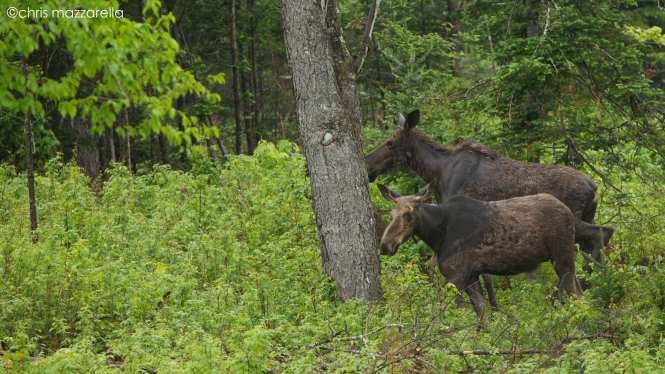 The next morning I was back in the woods at 5 AM accompanied by yet another pair of moose. This time it was mom and daughter, and the two were less carefree than the guys from the night before. They spotted me right away, and suggested that they’d rather have a private breakfast by trotting off deeper into the woods. The rain was really coming down now, but somehow the mosquitos didn’t seem to mind at all. It felt like a good opportunity to go for a drive so I cruised over to Maine for some backroad sight seeing.
The next morning I was back in the woods at 5 AM accompanied by yet another pair of moose. This time it was mom and daughter, and the two were less carefree than the guys from the night before. They spotted me right away, and suggested that they’d rather have a private breakfast by trotting off deeper into the woods. The rain was really coming down now, but somehow the mosquitos didn’t seem to mind at all. It felt like a good opportunity to go for a drive so I cruised over to Maine for some backroad sight seeing.
In between the passing wiper blades I saw a variety of wildlife as I headed deeper into the woods and closer to the Canadian border. An otter scurried across the battered road in front of me, but the downpour was not inviting photo-ops. Nonetheless, the forest was bristling with activity including fox, porcupine, baby woodchucks, and an adorable family of woodcocks taking their time crossing the road as I waited. In the mix were a couple more cow moose and of course, plenty of deer. I drove for hours hoping to prove the forecasters wrong, patiently waiting for a chance to take the kayak out for a paddle. My wishes were denied and the day passed without a spell of dry weather. My spirits were deflated by the time I arrived at my room that night, but this was only the beginning of my troubles. 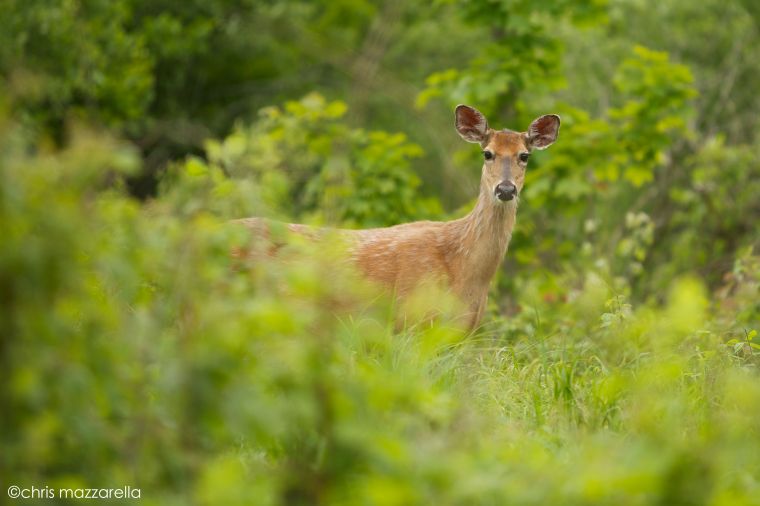 In my hurried decision to depart on this trip I had made a big mistake. I packed my truck to full capacity with camera gear, rain coats, kayaking equipment and dry changes of clothes but overlooked an essential component—food. No, I wasn’t going to starve, but I was subject to four days of rural gas station cuisine. By the second night my stomach erupted into full-blown rebellion and my lonely motel room would serve as my hospital bed for the next 24 hours. Granted, I was not exactly roughing it with basic cable and a bathroom, but this is certainly not where I wanted to be spending my weekend.
In my hurried decision to depart on this trip I had made a big mistake. I packed my truck to full capacity with camera gear, rain coats, kayaking equipment and dry changes of clothes but overlooked an essential component—food. No, I wasn’t going to starve, but I was subject to four days of rural gas station cuisine. By the second night my stomach erupted into full-blown rebellion and my lonely motel room would serve as my hospital bed for the next 24 hours. Granted, I was not exactly roughing it with basic cable and a bathroom, but this is certainly not where I wanted to be spending my weekend.
I suffered through the night hoping for a triple recovery of health, weather, and spirits. But, the morning came, and my condition only seemed to worsen. My bed-ridden day was spent careening through bouts of sweat, chills, nausea, and stomach pain. My stubborn approach to recovery consisted of just a few simple remedies: sleep, hydration, and denial.
As the evening approached, I’d exhausted my ability to let this ailment consume any more of my weekend trip. In complete rejection of my symptoms I took a quick shower and hopped in the truck. I was going to kayak regardless of how miserable I felt. I had spotted a small beaver pond the day before and decided to pursue it. It was in the middle of nowhere, and required a little bit of hiking to get to, but looked like perfect moose habitat. I made it about halfway there before all bodily systems started shutting down. My nausea forced me to pull the truck over, and I was back asleep, this time in the middle of the woods. I was parked and sleeping for a little over an hour when a humming bird flew into my driver side window bringing an abrupt and startling end to my nap. Back to reality, I started up the truck and continued on my mission. I spotted the pond, and pulled off the road trying to get in as close as possible. There were still a couple hundred yards to hike, so I loaded up the kayak and pulled it like a sled down to the water. Once I was in the water my spirits were back. Right away, I was greeted by a beaver leading the way towards a larger opening in the pond. I paddled across and ventured on through a small stream, pulling my way forward one handful of grass at a time, as it was too tight to paddle. The stream opened up to yet another open body of water. The scene was idyllic. The overcast sky made the lush June vegetation burst with color. The rain had stopped, and the marsh was singing with life accompanied by the percussion of slapping beaver tails. I now knew I’d made the right decision in venturing out, and my greatest reward was yet to come. As I paddled onward I heard a rustling in the brush that was making its way closer. Watching the saplings bend over as it drew nearer, I was clearly in for a formidable visitor. Suddenly, an enormous bull moose appeared in front of me a mere fifteen or twenty feet away!
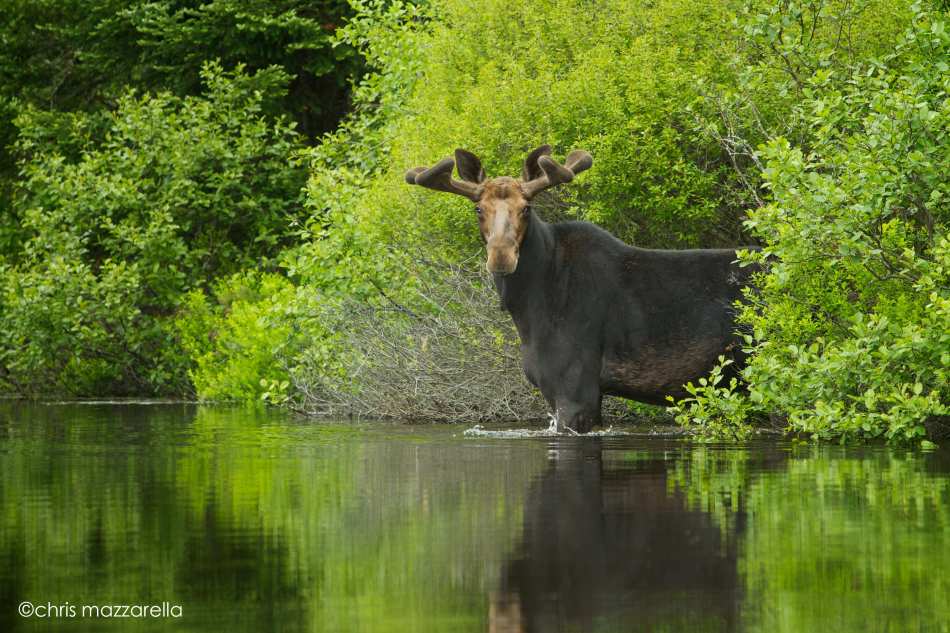 I literally had to start back paddling to avoid running right into him. As he swiftly waded into the water I was made aware of how vulnerable I was in the knee-deep pond. Once I’d backed up to a comfortable distance, my heart rate slowed down, and the camera came out. He spent the next twenty minutes dunking his head into the marsh for a bite to eat, coming up for air every ten seconds or so. It was an unforgettable encounter, and worth every last ounce of effort to see!
I literally had to start back paddling to avoid running right into him. As he swiftly waded into the water I was made aware of how vulnerable I was in the knee-deep pond. Once I’d backed up to a comfortable distance, my heart rate slowed down, and the camera came out. He spent the next twenty minutes dunking his head into the marsh for a bite to eat, coming up for air every ten seconds or so. It was an unforgettable encounter, and worth every last ounce of effort to see!
Shooting Through the Rain
The Northeast is soaking up a heavy helping of rainfall just as photographers are primed to get outside and capture the burgeoning spring flora greening up our landscape. While the wet weather can be a hindrance, it also provides new photographic opportunities. The overcast sky acts as a giant soft-box creating gorgeous even lighting and brilliant colors perfect for photographing fall foliage, or a budding spring forest.
While the rain tends to keep us cooped up indoors, sometimes it can have the opposite affect on a wildlife subject. I stumbled across this cow moose in the middle of the afternoon enjoying a nice sun shower and a bite to eat. With a little bit of preparation, I was able to capture the shot while keeping my gear dry. 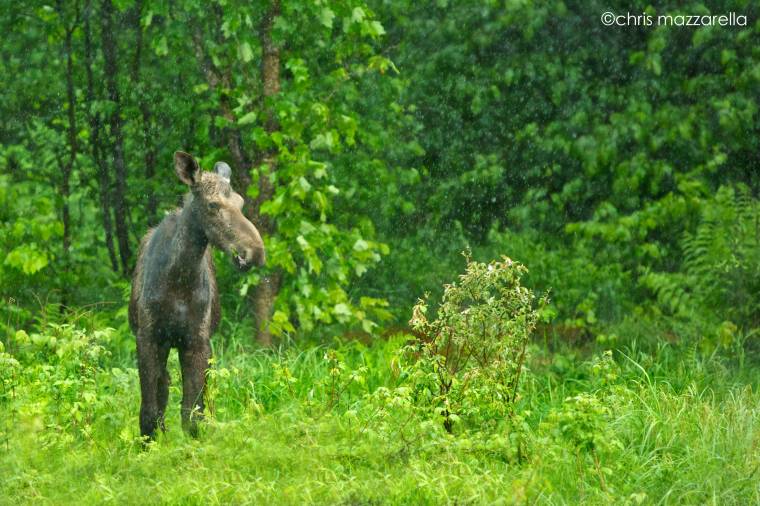 I usually use cheap plastic rain sleeves which easily cover up my 5D Mark iii, a 70-200mm f2.8 lens and hood. You can also spend a few extra bucks on a heavy-duty rainguard, but I like how the lighter plastic versions easily fit into my pocket on days when the rain is intermittent. When shooting in the rain, I try to pack light, and always leave any gear that isn’t weather sealed behind. I suggest sticking to one lens with internal zoom, and be sure to keep the hood on. You’ll want to save any lens changes for a dry environment, so a versatile lens like the Canon 70-200mm, or something wider like a 24-105mm f4 are good choices.
I usually use cheap plastic rain sleeves which easily cover up my 5D Mark iii, a 70-200mm f2.8 lens and hood. You can also spend a few extra bucks on a heavy-duty rainguard, but I like how the lighter plastic versions easily fit into my pocket on days when the rain is intermittent. When shooting in the rain, I try to pack light, and always leave any gear that isn’t weather sealed behind. I suggest sticking to one lens with internal zoom, and be sure to keep the hood on. You’ll want to save any lens changes for a dry environment, so a versatile lens like the Canon 70-200mm, or something wider like a 24-105mm f4 are good choices.
A Silver Lining
Understandably, many people are not going to risk taking their valuable gear out on a rainy day. I’ve never come across a warranty that covers water damage, and insurance plans are often the same way. If you’re not up for the gamble, keep your gear safe indoors, but be ready for a break in the weather. It’s also nice to get outside right after the rain lets up. The cloud cover is still offering great light, and the rain sleeve can come off giving you better access to the camera’s LCD display and custom functions. The dry sky allows for vertical camera angles giving you an ants-eye-view of your subject, literally dripping with added interest.
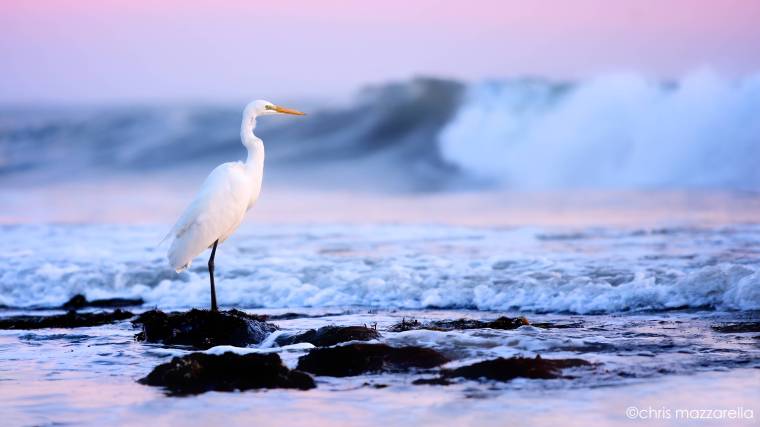 Sticking it out during inclement weather always seems to pay off for me in one way or another. If I haven’t taken a photo that peaked my interest, its a pretty good indication that my work isn’t done yet. I can’t tell you how many times I find the shot I’m after in the final moments of daylight, putting my camera’s ISO capabilities to the test as the sun has sunk out of sight. With a little bit of diligence you can get that silver lining shot, even on those rainy days.
Sticking it out during inclement weather always seems to pay off for me in one way or another. If I haven’t taken a photo that peaked my interest, its a pretty good indication that my work isn’t done yet. I can’t tell you how many times I find the shot I’m after in the final moments of daylight, putting my camera’s ISO capabilities to the test as the sun has sunk out of sight. With a little bit of diligence you can get that silver lining shot, even on those rainy days.
Selective Focus: How to Take Interesting Nature Photos Under Lackluster Conditions
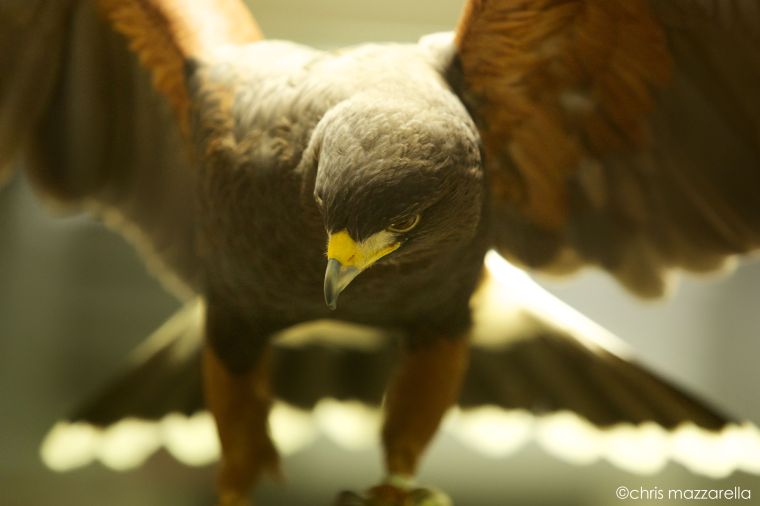 One of the most common barriers to an aspiring nature photographer is their lack of access to a photogenic wildlife habitat. I’m fortunate to live in the Northeast which is full of wildlife opportunities; however there’s always potential for a great shot regardless of your surroundings. Travel and wildlife photographer Chris McLennan, snapped one of his most publicized images, sitting in a cafe while a hummingbird was passing by. He happened to have his camera at the ready and captured a stunning image of the ruby-throated beauty.
One of the most common barriers to an aspiring nature photographer is their lack of access to a photogenic wildlife habitat. I’m fortunate to live in the Northeast which is full of wildlife opportunities; however there’s always potential for a great shot regardless of your surroundings. Travel and wildlife photographer Chris McLennan, snapped one of his most publicized images, sitting in a cafe while a hummingbird was passing by. He happened to have his camera at the ready and captured a stunning image of the ruby-throated beauty.
The best way to work around an unattractive backdrop is using a very shallow depth of field. I captured this harper hawk image in a rather lackluster setting. By using a large aperture and focusing on the beak and eyes, I was able to “pull” the hawk out of the scene making the background obsolete.
 Another important consideration is the angle of your shot. I snapped this crab photo at high noon on an empty beach. This is not exactly an ideal setting for an interesting photograph. By laying down on the wet sand I was able to get eye to eye with the crustacean, providing for a more stately portrait. This angle also created a reflection on the wet beach that I wouldn’t have captured had I shot this standing up. Using an aperture of f2.8 was helpful to this scene as well. The sharpness of your subject is more dramatic when juxtaposed with a blurred foreground.
Another important consideration is the angle of your shot. I snapped this crab photo at high noon on an empty beach. This is not exactly an ideal setting for an interesting photograph. By laying down on the wet sand I was able to get eye to eye with the crustacean, providing for a more stately portrait. This angle also created a reflection on the wet beach that I wouldn’t have captured had I shot this standing up. Using an aperture of f2.8 was helpful to this scene as well. The sharpness of your subject is more dramatic when juxtaposed with a blurred foreground.
Lastly, don’t wait for a trophy specimen to stumble by you before getting out the camera. I find that shooting everyday subjects can be just as rewarding. In fact, it offers a fun challenge and puts your photographic creativity to the test. I’ve spent hours photographing blue jays, robins, and other abundant species around the backyard. Doing so, forces you to be creative and will lead you to explore new functions on your camera that you didn’t dare experiment with before.
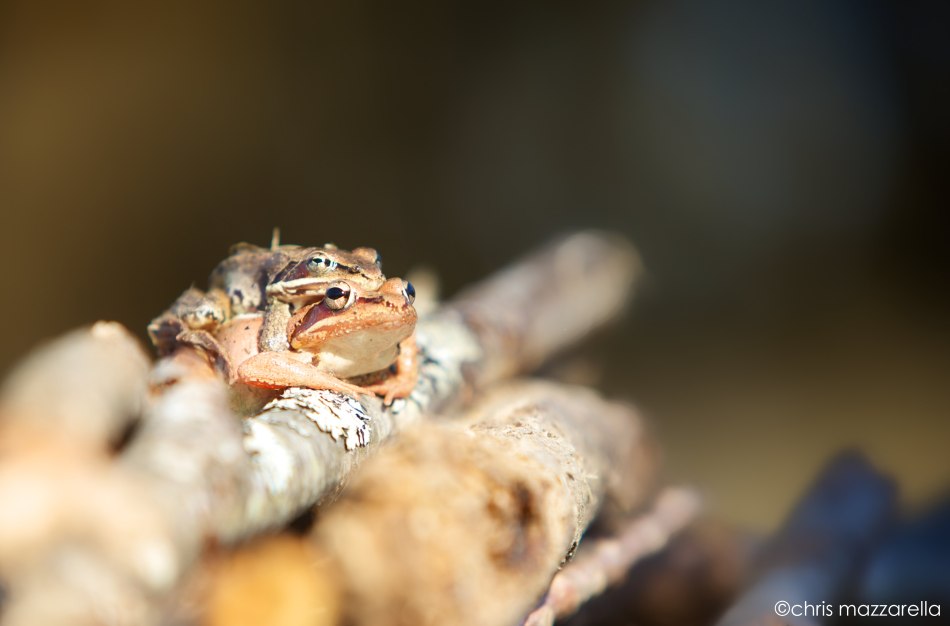 You’d be hard pressed to walk around my yard without hearing a chorus of tree fogs and peepers, but I don’t take for granted the photographic possibilities. The bottom line is, work with what you have at your disposal. Perhaps its just an iphone, and a butterfly on your porch. Does this mean you can’t make a great image? I think I know how Chase Jarvis would answer that question.
You’d be hard pressed to walk around my yard without hearing a chorus of tree fogs and peepers, but I don’t take for granted the photographic possibilities. The bottom line is, work with what you have at your disposal. Perhaps its just an iphone, and a butterfly on your porch. Does this mean you can’t make a great image? I think I know how Chase Jarvis would answer that question.

